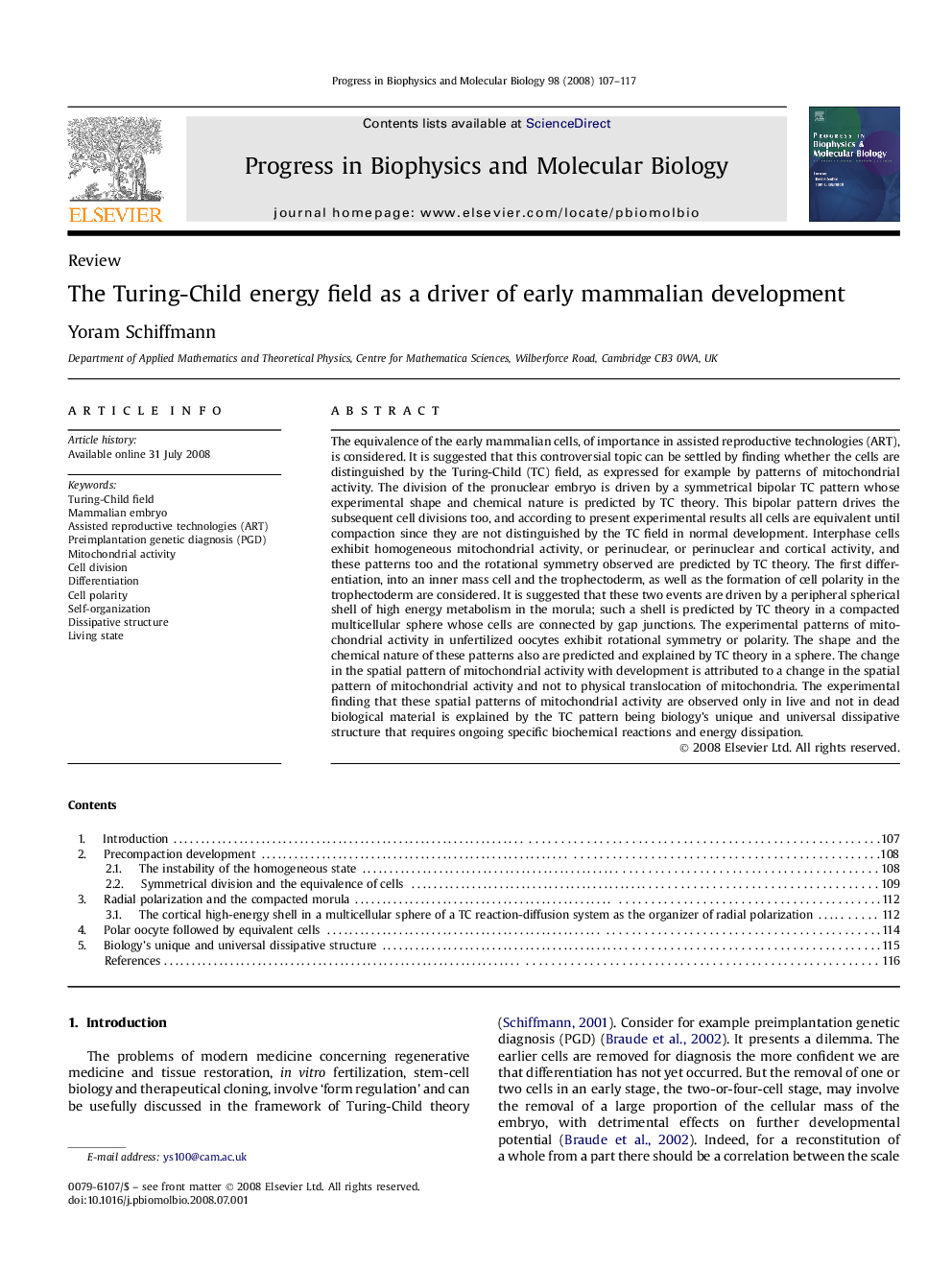| کد مقاله | کد نشریه | سال انتشار | مقاله انگلیسی | نسخه تمام متن |
|---|---|---|---|---|
| 2070384 | 1078489 | 2008 | 11 صفحه PDF | دانلود رایگان |
عنوان انگلیسی مقاله ISI
The Turing-Child energy field as a driver of early mammalian development
دانلود مقاله + سفارش ترجمه
دانلود مقاله ISI انگلیسی
رایگان برای ایرانیان
کلمات کلیدی
preimplantation genetic diagnosis (PGD) - تشخیص ژنتیکی قبل از تکامل (PGD)Differentiation - تفکیکCell division - تقسیم سلولی، تقسیم یاختهایMammalian embryo - جنین پستاندارSelf-organization - خودسازمان دهی، خودسازمانیابیDissipative structure - ساختار انحصاریMitochondrial activity - فعالیت میتوکندریAssisted reproductive technologies (ART) - فن آوری های باروری کمک (ART)Cell polarity - قطب سلولی
موضوعات مرتبط
علوم زیستی و بیوفناوری
بیوشیمی، ژنتیک و زیست شناسی مولکولی
بیوفیزیک
پیش نمایش صفحه اول مقاله

چکیده انگلیسی
The equivalence of the early mammalian cells, of importance in assisted reproductive technologies (ART), is considered. It is suggested that this controversial topic can be settled by finding whether the cells are distinguished by the Turing-Child (TC) field, as expressed for example by patterns of mitochondrial activity. The division of the pronuclear embryo is driven by a symmetrical bipolar TC pattern whose experimental shape and chemical nature is predicted by TC theory. This bipolar pattern drives the subsequent cell divisions too, and according to present experimental results all cells are equivalent until compaction since they are not distinguished by the TC field in normal development. Interphase cells exhibit homogeneous mitochondrial activity, or perinuclear, or perinuclear and cortical activity, and these patterns too and the rotational symmetry observed are predicted by TC theory. The first differentiation, into an inner mass cell and the trophectoderm, as well as the formation of cell polarity in the trophectoderm are considered. It is suggested that these two events are driven by a peripheral spherical shell of high energy metabolism in the morula; such a shell is predicted by TC theory in a compacted multicellular sphere whose cells are connected by gap junctions. The experimental patterns of mitochondrial activity in unfertilized oocytes exhibit rotational symmetry or polarity. The shape and the chemical nature of these patterns also are predicted and explained by TC theory in a sphere. The change in the spatial pattern of mitochondrial activity with development is attributed to a change in the spatial pattern of mitochondrial activity and not to physical translocation of mitochondria. The experimental finding that these spatial patterns of mitochondrial activity are observed only in live and not in dead biological material is explained by the TC pattern being biology's unique and universal dissipative structure that requires ongoing specific biochemical reactions and energy dissipation.
ناشر
Database: Elsevier - ScienceDirect (ساینس دایرکت)
Journal: Progress in Biophysics and Molecular Biology - Volume 98, Issue 1, September 2008, Pages 107-117
Journal: Progress in Biophysics and Molecular Biology - Volume 98, Issue 1, September 2008, Pages 107-117
نویسندگان
Yoram Schiffmann,